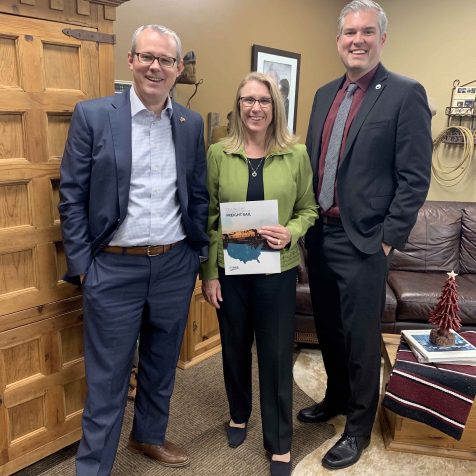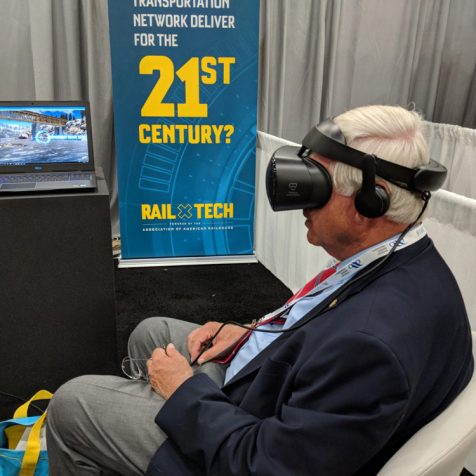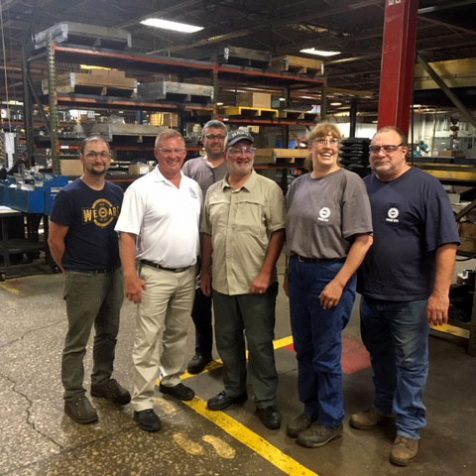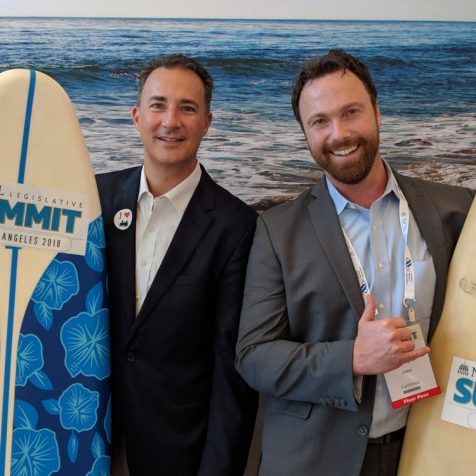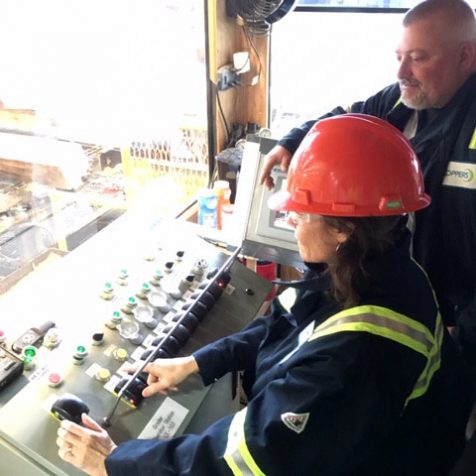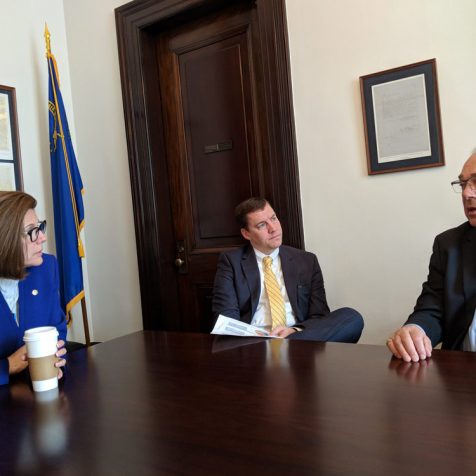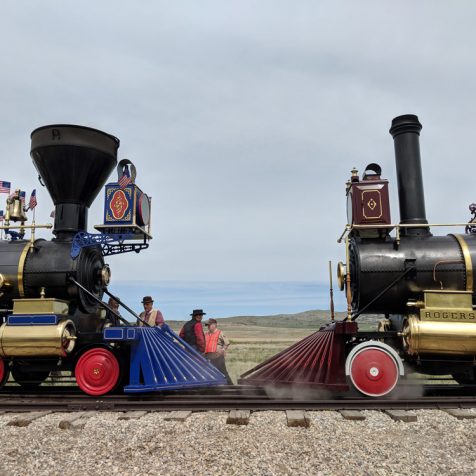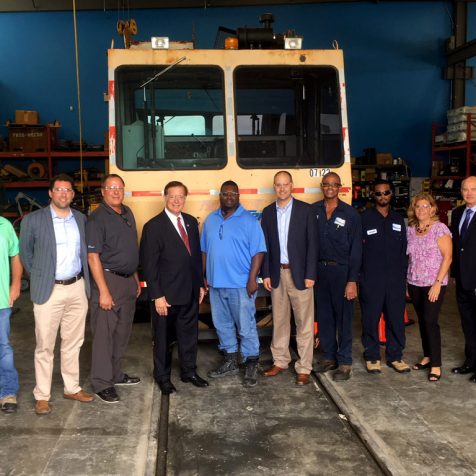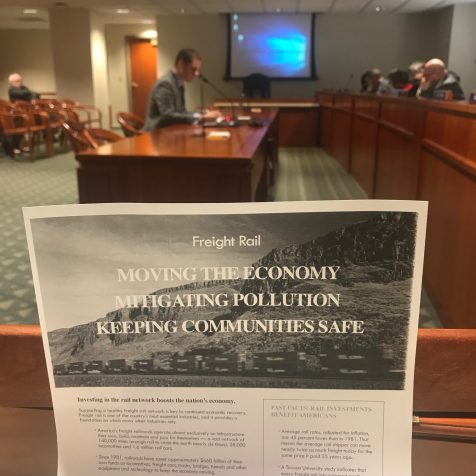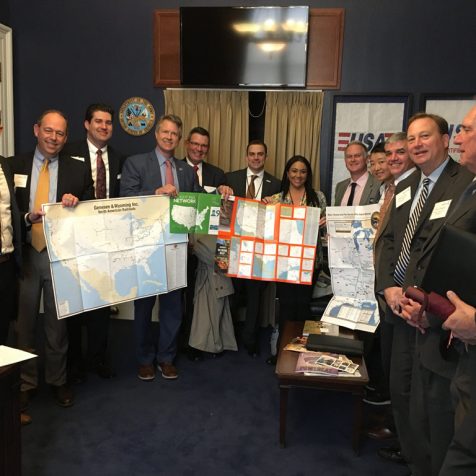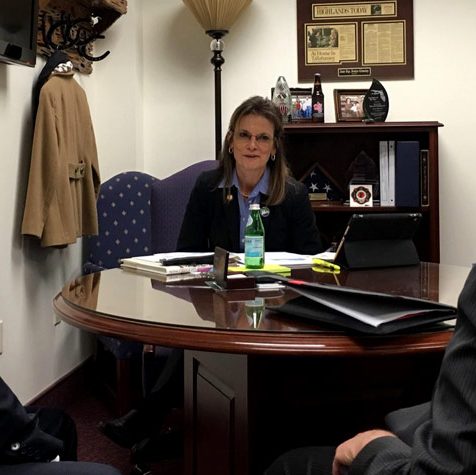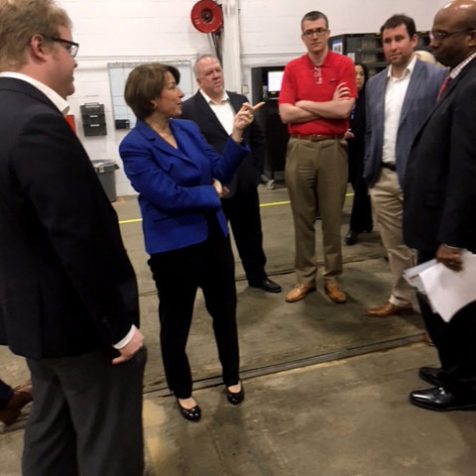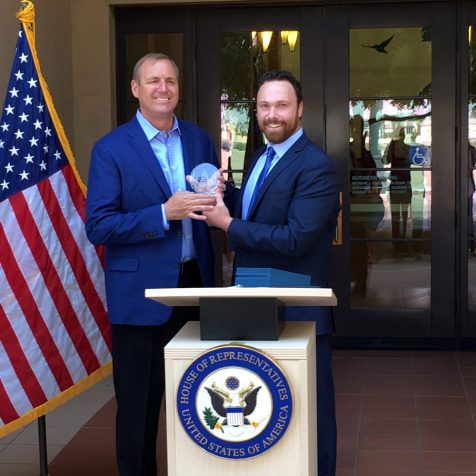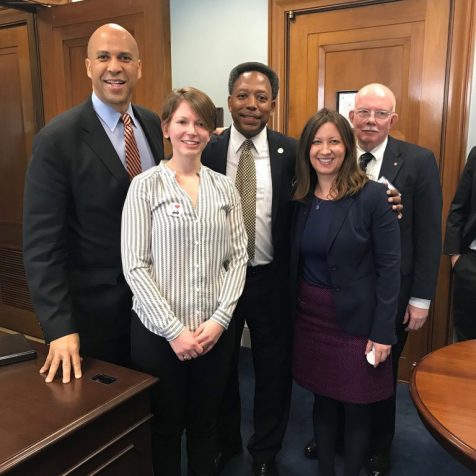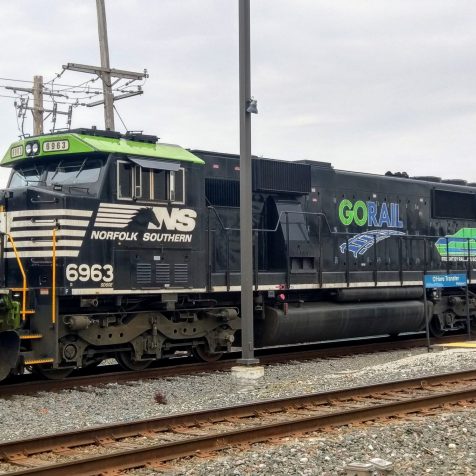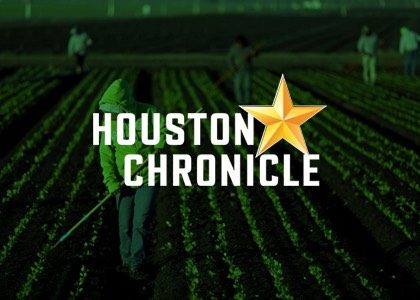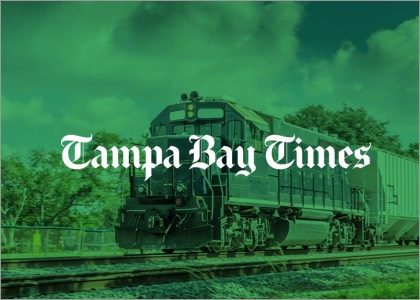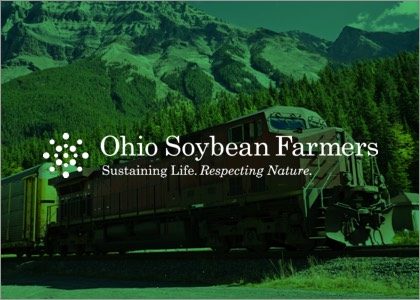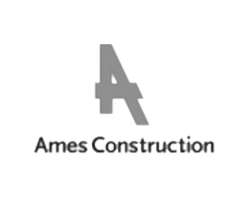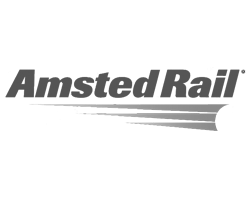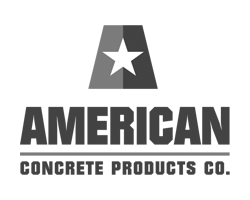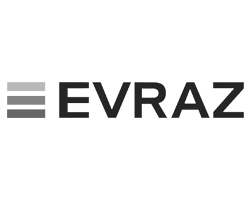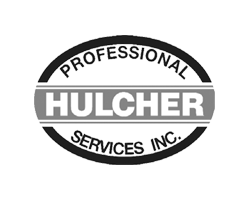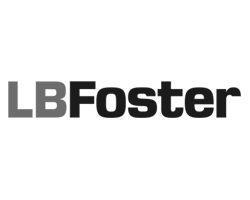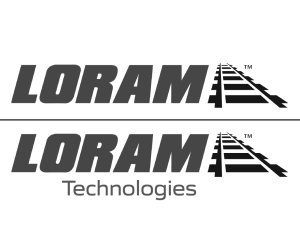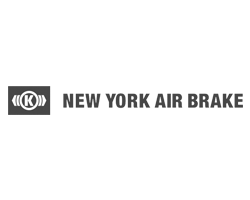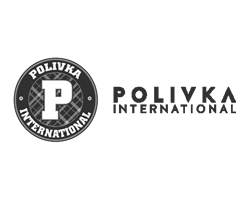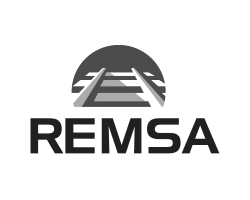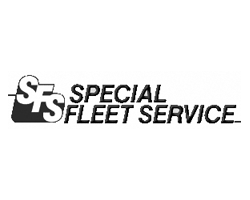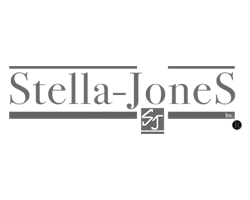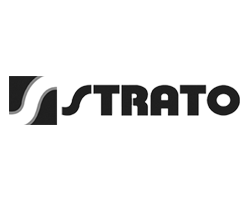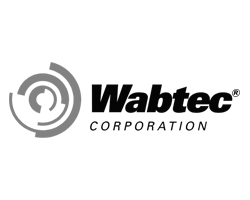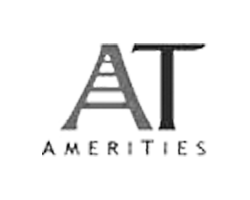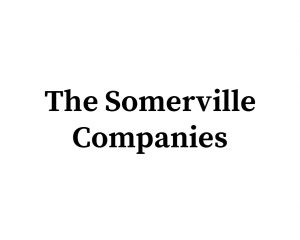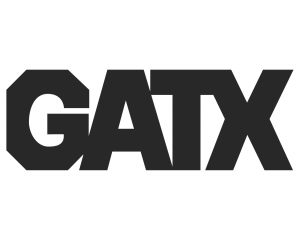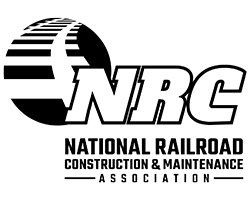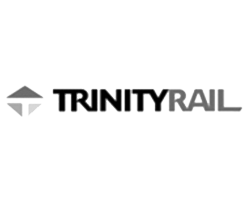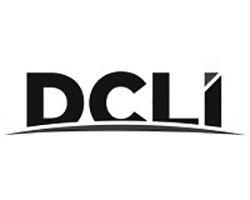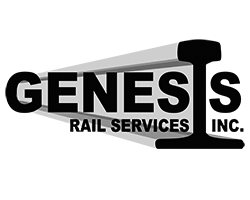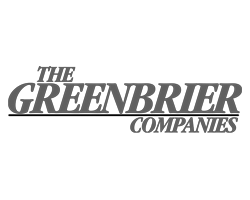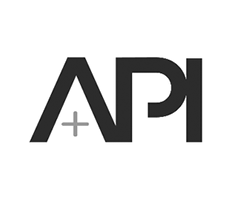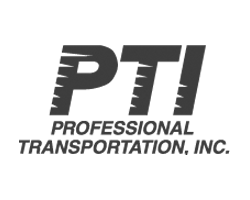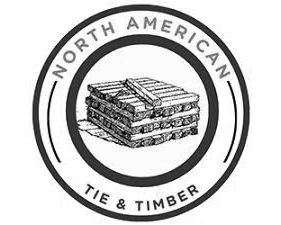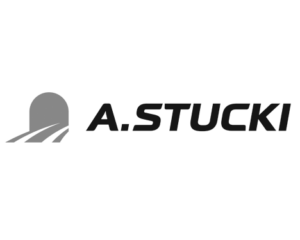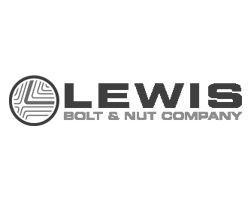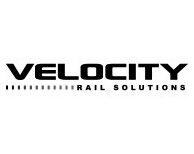
A word from
GoRail Board Chair
Paul Bischler
BNSF Railway
Heading into its 15th year, GoRail continues to do an outstanding job educating the public and elected officials about the many ways railroads and our suppliers contribute to the economy and enhance the quality of life for all Americans.
Thanks to GoRail, hundreds of county commissioners, state legislators, mayors, chambers of commerce, economic development professionals and other local leaders understand the freight rail story—railroads pay their own way, investing billions of dollars each year in the people, technology, equipment and infrastructure that powers the American economy and has given the United States the safest, most efficient and productive freight rail system in the world.
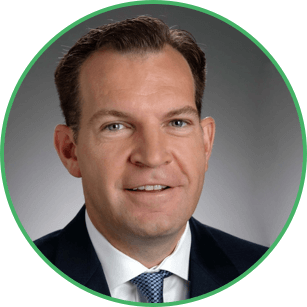
A word from GoRail Board Chair Paul Bischler
BNSF Railway
Heading into its 15th year, GoRail continues to do an outstanding job educating the public and elected officials about the many ways railroads and our suppliers contribute to the economy and enhance the quality of life for all Americans.
Thanks to GoRail, hundreds of county commissioners, state legislators, mayors, chambers of commerce, economic development professionals and other local leaders understand the freight rail story—railroads pay their own way, investing billions of dollars each year in the people, technology, equipment and infrastructure that powers the American economy and has given the United States the safest, most efficient and productive freight rail system in the world.
Key decision makers in Congress take note when local leaders back home reinforce the importance of freight rail and that the freight rail industry is driving technological innovations that make the rail network ever safer and more efficient. They listen when their own constituents tell them how freight rail reliably connects their communities and local businesses to markets nationwide and around the world. And they pay attention when these individuals ask them to make sure that federal government policies continue to support freight rail innovation, spending, and investment.
This past year alone, GoRail met with more than 2,000 community leaders in hundreds of cities and towns all across America to tell the freight rail story. With major changes in the makeup of Congress and on key congressional committees, this kind of outreach is more important than ever heading into 2019.
I look forward to helping GoRail navigate the challenges ahead as 2019 Chairman of the Board, and I sincerely appreciate the support of the thousands of community and business leaders; local, county, and state officials; and rail suppliers and contractors who have made GoRail such an effective voice for our industry in Congress and in the communities we serve.
If you could use one word to describe your tenure at AAR, what would it be?
That's why we work so hard to connect with communities on a one-on-one basis, telling the freight rail story and building lasting relationships. To get this job done, our small staff conducts thousands of meetings each year with local leaders coast-to-coast. On top of all this individual outreach, we’re also proud to host events — tours of rail supplier facilities, rail forums and statehouse “rail days” — and support the publication of earned and social media from our network of rail advocates.
Here’s a way to visualize this work in action.
 Events
Events Media
Media Site Visits
Site Visits
Click the map to enable zoom/pan options.
Sharing the freight rail story with communities across the country keeps GoRail’s state directors plenty busy. Each month, they visit at least one community within their territories on a one-week “site visit,” conducting at least 25 meetings with local leaders each trip. This travel is carefully planned to target the districts and states of members of Congress on key committees, for example the House Transportation and Infrastructure and Senate Commerce, Science and Transportation committees. State Directors are educators, recruiters and relationship-builders. They use a coalition strategy of grassroots advocacy that makes GoRail’s model extremely effective.
Take a closer look at a “day in the life” for each of our state directors.
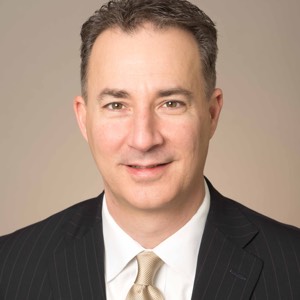
Michael Gaynor
Idaho, Indiana, Iowa, Kentucky, Maine, Massachusetts, Montana, Nebraska, New Hampshire, New Mexico, Ohio, Rhode Island, Utah, Vermont, West Virginia, WyomingSite visit: Elkhart County, Indiana, and region (Senate Commerce member Sen. Todd Young)

Michael Gaynor
Site visit: Elkhart County, Indiana and region (Senate Commerce member Sen. Todd Young)
“My site visit to Northern Indiana – primarily Elkhart County – was designed to educate local stakeholders about the many public benefits of privately funded railroads, as well as the policy issues facing rail.
I began one of my days on the road by meeting with the mayor of Elkhart, during which we discussed pending re-regulation proposals at the U.S. Surface Transportation Board (STB). The mayor was supportive, sending a letter to his representative and two senators. Similarly, a productive meeting with the Economic Development Corporation of Elkhart County yielded a letter on STB, a commitment to review a pro-rail op-ed and an invitation for GoRail to present at a manufacturing conference in 2019.
Still in Elkhart County, I then met with two county commissioners. One of these commissioners agreed to author an op-ed on the importance of international trade and this piece was later published in the local Elkhart paper. Rounding out the day, I traveled to the City of Mishawaka to connect with the mayor, who agreed to review a pro-rail letter to his members of Congress.”

Nate Kaplan
California, Nevada, Oregon, WashingtonSite visit: Portland, Oregon, and region (House T&I Ranking Member Peter DeFazio, Senate Finance Ranking Member Ron Wyden)

Nate Kaplan
Site visit: Portland, Oregon and region (House T&I Ranking Member Peter DeFazio, Senate Finance Ranking Member Ron Wyden)
"I started the Tuesday of my Portland site visit by meeting over coffee with the Portland Alliance, the city's Chamber of Commerce. After discussing our position on forced access, the Alliance expressed its interest in sending a letter on the issue to all seven members of the Oregon delegation. This came with the assistance of Union Pacific, which is also a member of the Alliance — a great example of how GoRail collaborates with the railroads to achieve results.
Next, in an effort to increase outreach to academia, I met with a professor at Portland State University’s School of Business. It was a great opportunity to build inroads with a transportation expert and educate him more on topics from forced access to infrastructure investment. He agreed to review an op-ed on re-regulation proposals pending at the Surface Transportation Board.
I then met with the Multnomah County HazMat Department to share useful information about the AskRail app, which they hadn’t heard of and really appreciated.
Last but not least, I met with the mayor of Oregon City in the afternoon. During a casual and frank discussion in the mayor’s screen-printing shop, we touched on issues from the economic regulation of rail to technology and safety. The mayor sent letters opposing forced access to the state’s entire congressional delegation within two days of our meeting."

Christy Sammon
Alabama, Florida, Georgia, Mississippi, North Carolina, South Carolina, TennesseeSite visit: Tampa, Florida (Senate Commerce Ranking Member Bill Nelson)

Christy Sammon
Site visit: Tampa, Florida (Senate Commerce Ranking Member Bill Nelson)
"The second day of my Tampa site visit started with the Chairwoman of the Hillsborough County Commission, discussing balanced rail regulation and the local transportation landscape. Rapid population growth has fueled interest in transportation issues, particularly roadway congestion, an area where city and county officials see rail as an effective way to get trucks off the road. The Chairwoman not only wrote letters to her congressional representatives but also submitted a letter to the Tampa Bay Times that was later published.
I then stopped by the office of a Tampa city councilwoman who is passionate about transportation and wants to improve the relationship between freight rail representatives and City officials on issues like blocked crossings. She agreed with our position on balanced regulation and sent letters to Senators Rubio and Nelson, as well as Congresswoman Kathy Castor.
Next up was a Hillsborough County commissioner who serves on the Metropolitan Planning Organization as well as the Tampa Regional Transportation Board. We had a lively discussion about GoRail and the policy issues facing freight rail. This was our first meeting, and I'll be following up in 2019.
Rounding out a productive day of meetings, I spoke with the vice president of government affairs at the Port of Tampa, who updated me on future projects at the port. The port later tweeted the Tampa Bay Times letter-to-the-editor mentioned previously. In addition, I was also able to meet with several Port Authority Board members, including the mayor of Tampa."

Emily Traiforos
Colorado, Connecticut, Delaware, Maryland, New Jersey, New York, Pennsylvania, VirginiaSite visit: Connecticut and New York (Senate Commerce member Sen. Richard Blumenthal, House T&I members Rep. John Faso and Rep. Sean Patrick Maloney)

Emily Traiforos
Site visit: Connecticut and New York (Senate Commerce member Sen. Richard Blumenthal, House T&I members Rep. John Faso and Rep. Sean Patrick Maloney)
"This week was split between visits to New York and Connecticut. On Wednesday, I began the day by speaking with a New York Assemblyman, an advocate who I had met earlier in the year. We discussed the expected confirmations of STB members and how a fully staffed board could weigh in on several pending re-regulation proposals. He agreed to send letters to his members of Congress and was able to get them out within the week.
Later, in Connecticut, I met with the City Manager of Coventry, who’s also on the board for CT Conference of Municipalities and past President of the CT Council of Small Towns. He did not take action on the spot but expressed an interest in keeping in touch; I hope to develop this relationship over time.
On the way to my next meeting, I drove past the Windham Chamber of Commerce and stopped in to say “hi” to an advocate who had signed the STB group letter in 2017. This visit prompted her to take a fresh look at letters I had shared with her earlier in the year — and to send them to her representative and both senators.
I then met with a state senator who serves on the transportation committee and as First Selectman for the Town of Sprague. She was very supportive of rail, noting her advocacy for upgrades to the New England Central line and its connection with the Port of New London via a TIGER grant. She followed GoRail on Twitter during our meeting and subsequently sent letters in support of balanced regulation."

Larry Lloyd
Illinois, Michigan, Minnesota, North Dakota, South Dakota, WisconsinSite visit: Detroit, Michigan (Senate Commerce member Sen. Gary Peters, Rep. Tim Walberg, Rep. Haley Stevens)

Larry Lloyd
Site visit: Detroit, Michigan (Senate Commerce member Sen. Gary Peters, Rep. Tim Walberg, Rep. Haley Stevens)
"I started my Monday by meeting with the Detroit Economic Growth Corporation (DEGC), during which they asked me to participate in a forum on export opportunities that Friday. The event – held for Michigan businesses, the Michigan Economic Development Corporation and a few other Detroit-area economic development associations looking to export products – was a productive way to connect with new groups and highlight the relationship between rail and trade.
Later that day, I participated in a district meeting with Congressman Tim Walberg (MI-7) at the invitation of a Michigan manufacturer. We discussed several topics including rail intermodal and the importance of trade with Mexico. Rep. Walberg mentioned blocked crossings as his top rail concern and that he hopes to develop an intermodal facility in Monroe.
In the evening, I provided a transportation briefing to Haley Stevens, then a candidate for Congress in Michigan’s 11th district (she was elected in November). The briefing covered economic regulation, modal equity and NAFTA. Rep. Stevens is a major proponent of NAFTA and free trade, and she is very aware of freight rail’s importance to the automotive industry."
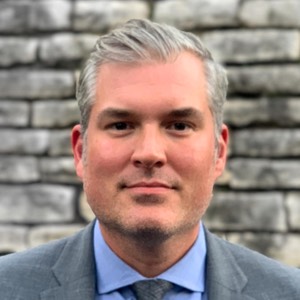
Weston McKee
Arizona, Arkansas, Kansas, Louisiana, Missouri, Oklahoma, TexasSite visit: Austin, Texas (Senate Commerce member Sen. Ted Cruz)

Weston Mckee
Site visit: Austin, Texas (Senate Commerce member Sen. Ted Cruz)
"My first site visit as a GoRail state director was both edifying and productive. Day one, Monday, kicked off with a meeting with the Texas Railroad Association. We discussed coordination for Texas Railroad Day at the Capitol, highlighting rail technologies via a ‘tech showcase’ for Texas elected officials — a great way for me to work with Texas railroads and some of the suppliers developing and implementing cutting-edge technologies for the industry.
I finished the day meeting with the Austin City Chamber and Texas Economic Development Council. After learning about the freight rail policy landscape and getting a closer look at rail technology advances, both groups expressed a renewed commitment to echo our messaging in trade publications and letters to Congress."
GoRail’s earned media program reached thousands of readers and listeners across the country in 2018. By way of 89 op-eds, letters to the editor, articles and radio interviews, GoRail advocates and staff touched on topics ranging from economic regulation and rail’s user-pay approach to infrastructure, to NAFTA and the many ways technological innovation is making a safe rail network even safer.
The best bet for a strong Texas economy? Preserving NAFTA
by Bob Mitchell, president of the Bay Area Houston Economic Partnership, published June 26 in the Houston Chronicle.
Freight trains are infrastructure that works in Tampa Bay
by Sandra Murman, Hillsborough County Commissioner, published on June 12 in the Tampa Bay Times.
Freight Rail in Michigan is Essential
Radio interview with Michigan State Rep. Triston Cole, published on March 21 by the Michigan Business Network.
Rail is a Critical Partner to Ohio’s Soybean Farmers
by GoRail’s Michael Gaynor, published November 2018 in Ohio Soybean News.
Railroads key to California’s economic, environmental future
by Gurbax Sahota, president and CEO of the California Association for Local Economic Development, published June 21 in Sacramento Business Journal.
 2,097
2,097
Educational
Meetings
 720
720
Advocates
Recruited
 89
89
Earned Media
Publications
 70,000+
70,000+
Social Media
Engagements
 906
906
Total Number of
Advocate Actions
Stewardship
The bulk of contributions to GoRail are funneled directly to the people and tools necessary to effectively tell the freight rail story. Administrative and fundraising costs are minimized while the largest portion of our budget supports our dedicated team and the tools they use to educate, recruit and mobilize local leaders across the country on behalf of a healthy freight rail network.


Thank you to all who helped make 2018
a successful year for GoRail.
The achievements and milestones documented in this report were made possible by thousands of people from hundreds of communities all across America. Many who helped advance our mission work directly for railroads, or rail suppliers or contractors – these are the men and women who build, maintain and operate the world’s finest freight rail system. Most GoRail advocates have no direct economic stake in the rail industry. They recognize, however, that a strong and thriving freight rail network is vital to their communities and to our national economy and quality of life. Special thanks to these individuals and to the companies listed below, which provided the resources that enabled us to do our work in 2018.



